Ten villages to visit in Emilia Romagna
1. Castell’Arquato
On the hills of the Val d’Arda valley lies the medieval village of Castell’Arquato, situated on the top of a hill overlooking the surrounding landscape. In fact, Castell’Arquato originated in the Middle Ages (there is a document that refers to finibus Castri Arquatense and dates back to 760). A site of strategic importance, an ancient feud dependent on the Duchy of Milan, it has not undergone any changes for about five centuries and therefore presents itself to us with an almost intact ancient appearance. Worth seeing are the collegiate church of Santa Maria with the splendid 15th-century frescoes in the chapel of Santa Caterina, the Palazzo del Podestà , the village’s most recognizable symbol (the building dates back to the 13th century), the Ducal Palace, the Rocca Viscontea and the Torrione Farnese. Castell’Arquato is also home to the “Luigi Illica” Museum, dedicated to the playwright who originated in the village, the Museo della Collegiata (which collects materials from both the Collegiata and other churches in the area), and the Geological Museum.
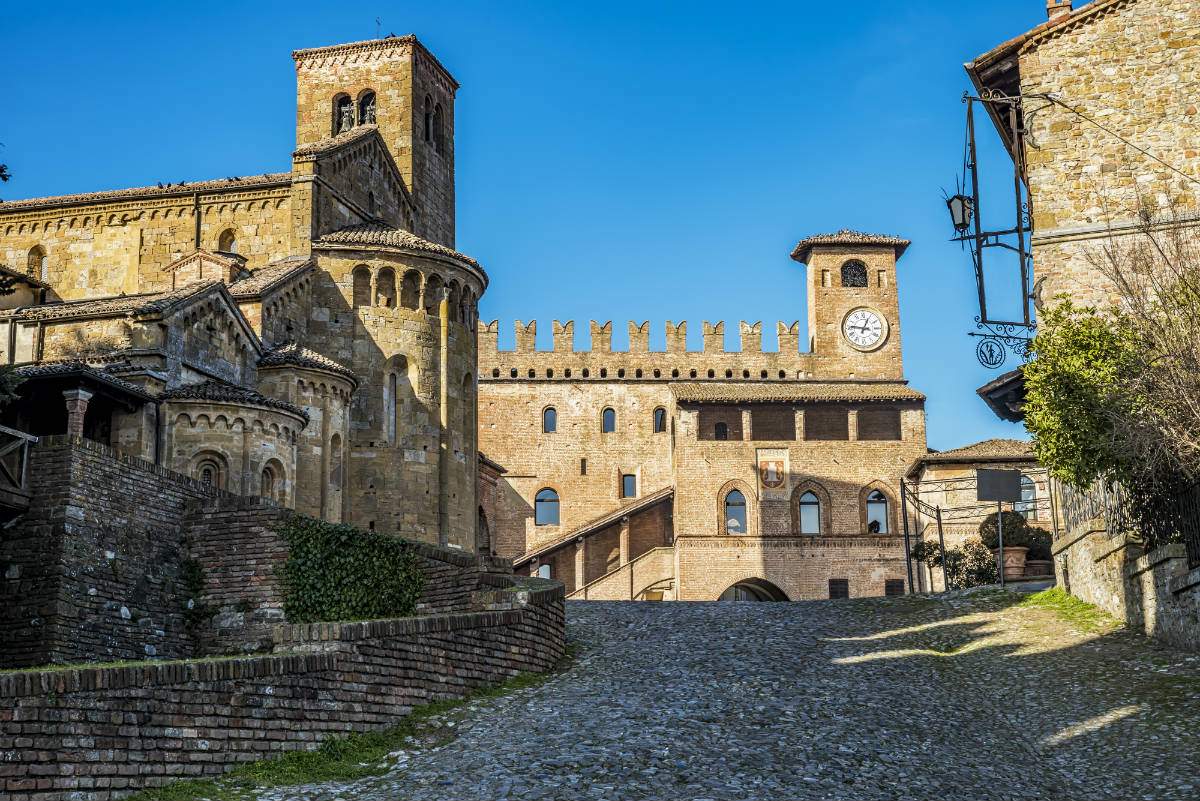 |
| View of Castell’Arquato |
2. Soragna
A small country village a few kilometers from Fidenza, Soragna has been the fief of the Meli-Lupi family since ancient times, and the most important site is, precisely, the Meli-Lupi Fortress, still inhabited by the last descendant of the dynasty of princes. An ancient medieval castle transformed into a sumptuous residence from the 16th century onward, it is one of the most beautiful manors in the province of Parma: not to be missed are the frescoes by Niccolò dell’Abate dedicated to the myth of Hercules, the numerous 16th-century grotesques, the long Galleria dei Poeti with literary-themed decorations, and the Throne Room and the Salottino Dorato rich in stuccoes. The village churches are also worth a visit: those of St. James and the Blessed Virgin of Mount Carmel, and the Oratory of St. Anthony of Padua (the latter designed by Francesco Galli da Bibbiena). Very special is the church of St. Catherine of Alexandria, of ancient origins but entirely rebuilt in neo-Gothic forms in the 1910s.
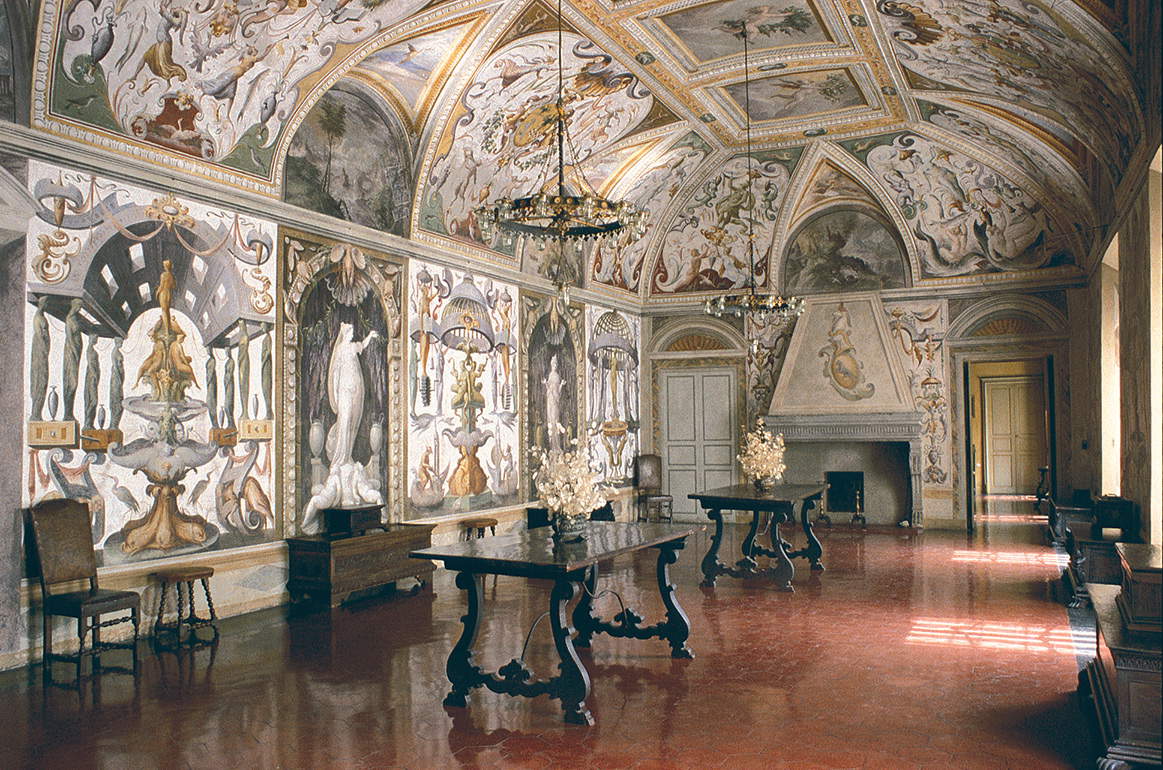 |
| Fortress of Soragna, the Hall of the Grotesques |
3. Cavriago
Cavriago is located in the heart of one of the “redest” areas of Italy, in the province of Reggio Emilia, and is distinguished for being the town that is home to what is, in all probability, the only surviving monument to Lenin in the Western world (it is located in the town’s central square: Piazza Lenin, precisely). The town has very ancient origins, however, and was first a Visconti fief, then an Este fief. Also worth seeing is the church of San Terenziano, of ancient origins but remodeled during the 17th century.
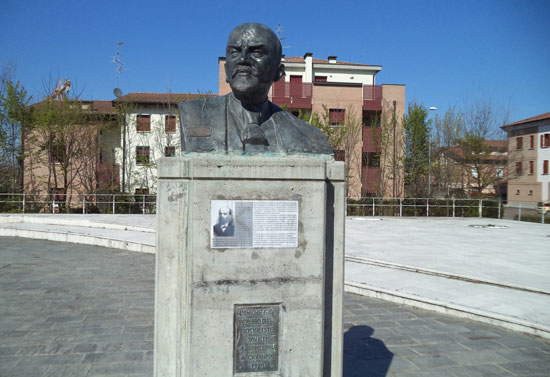 |
| The monument to Lenin in Cavriago |
4. Montegridolfo
It is located not far from Rimini, between the Conca and Foglia valleys, on top of a hill: in the past it was a border village between the lands of the Montefeltro and those of the Malatesta, who fought over Montegridolfo for a long time because of its strategic position. The village probably arose around the 10th century, although the first certain mentions date back to the 12th century. Today, Montegridolfo presents itself to visitors still in its medieval appearance, well preserved also thanks to recent restorations promoted by fashion designer Alberta Ferretti, originally from Gradara, a few kilometers away. Worth seeing are the church of San Rocco (which preserves one of the earliest altarpieces by Guido Cagnacci, one of the greatest artists of the 17th century), the sanctuary of the Vergine delle Grazie, and the Museum of the Gothic Line: the Gothic Line, in fact, ran near Montegridolfo, and crucial events of World War II took place around the village.
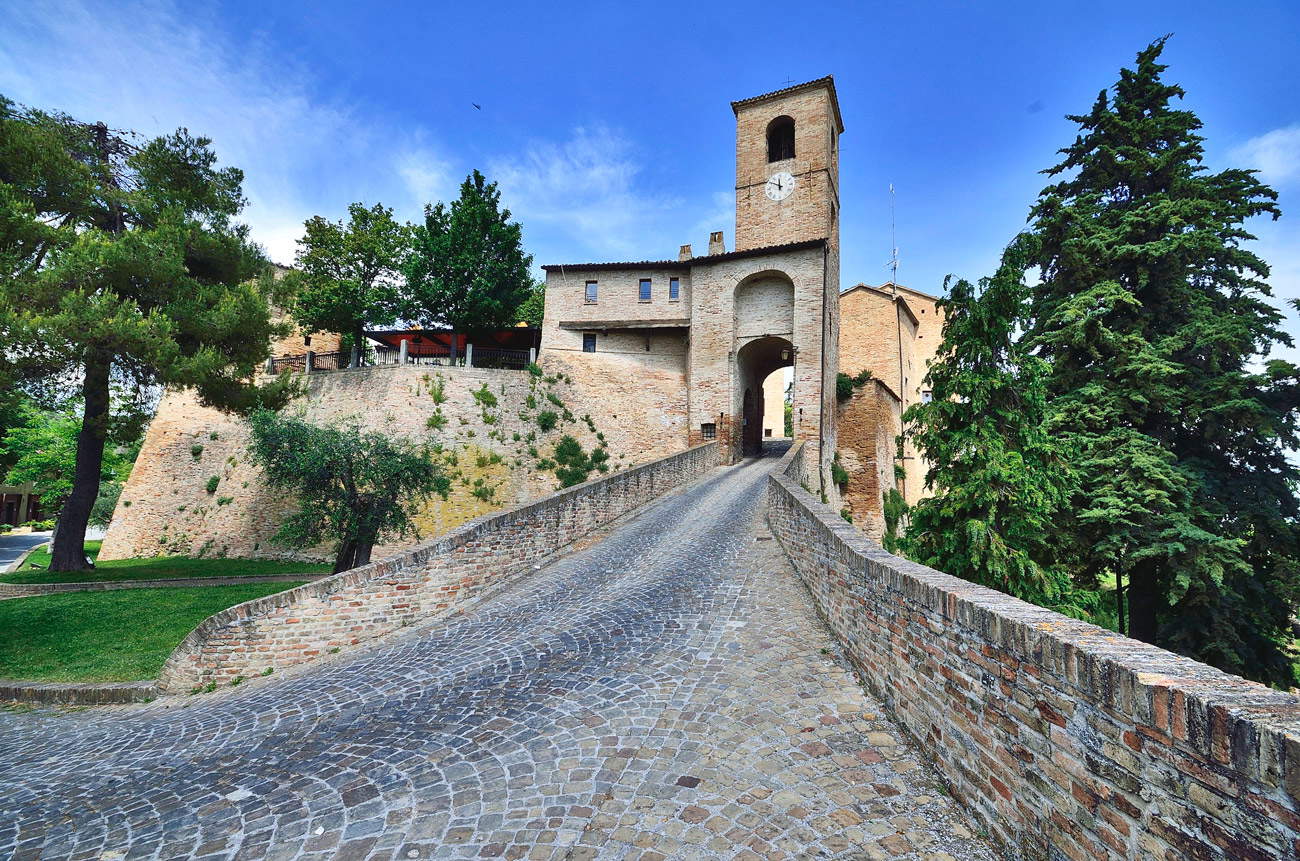 |
| The entrance to the village of Montegridolfo |
5. San Secondo Parmense
A rural village in the Parma plain, near Fontanellato and Fidenza, San Secondo Parmense is historically the fiefdom of the Rossi family, which built the sumptuous Rocca here in the 15th century, still one of the most beautiful castles in the Duchy of Parma and Piacenza. The interior, embellished thanks to the works promoted by Pier Maria I de’ Rossi, Pier Maria II, Troilo I and Troilo II, is a long sequence of frescoed rooms (with mostly mythological subjects) with works by great artists of the Emilian school of the 16th century such as Jacopo Zanguidi known as il Bertoja, Cesare Baglioni, Orazio Samacchini, Vincenzo Tamagni, Ercole Procaccini and others (not to be missed is the Room of the Golden Donkey, with depictions from Apuleius’ famous ancient tale). Also worth seeing in San Secondo is the Oratorio della Vergine del Suffragio with its rich 17th-century decorations, while near the town stands the Romanesque parish church of San Genesio, which preserves its 12th-century appearance intact.
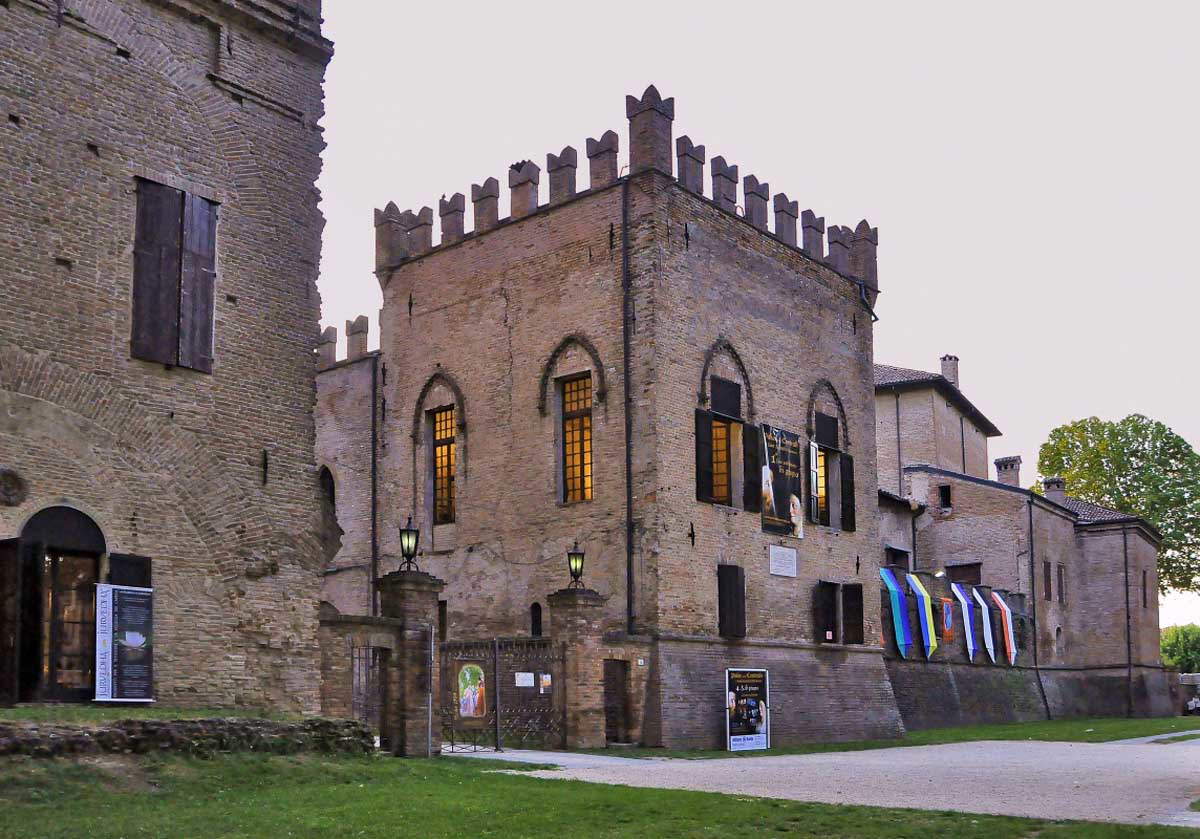 |
| The Fortress of San Secondo Parmense |
6. Gualtieri
The name of Gualtieri, located in the Reggio Emilia plain along the banks of the Po River, is universally associated with the great painter Antonio Ligabue: in fact, it was the village that welcomed the artist when he was expelled from Switzerland (Ligabue was in fact born in Zurich in 1899). There are as many as two museums dedicated to the artist that rise in the town: the “Antonio Ligabue Documentary Museum and Study Center,” which is housed in the centrally located Palazzo Bentivoglio and is mainly dedicated to his painting, and the Casa Museo Antonio Ligabue, which is housed in a building that was once inhabited by the painter and has the main objective of recounting his life, anecdotes and poetics with memorabilia and some works. In the quaint country village, in addition to the aforementioned Palazzo Bentivoglio, once the sumptuous residence of the Marquises Bentivoglio di Gualtieri (and now municipal headquarters: you can also visit the 20th-century art collection of costume designer Umberto Tirelli, who collected works by artists such as Felice Casorati, Renato Guttuso, Giorgio De Chirico, Balthus and others), also worth visiting are the churches of Santa Maria della Neve and Santa Vittoria.
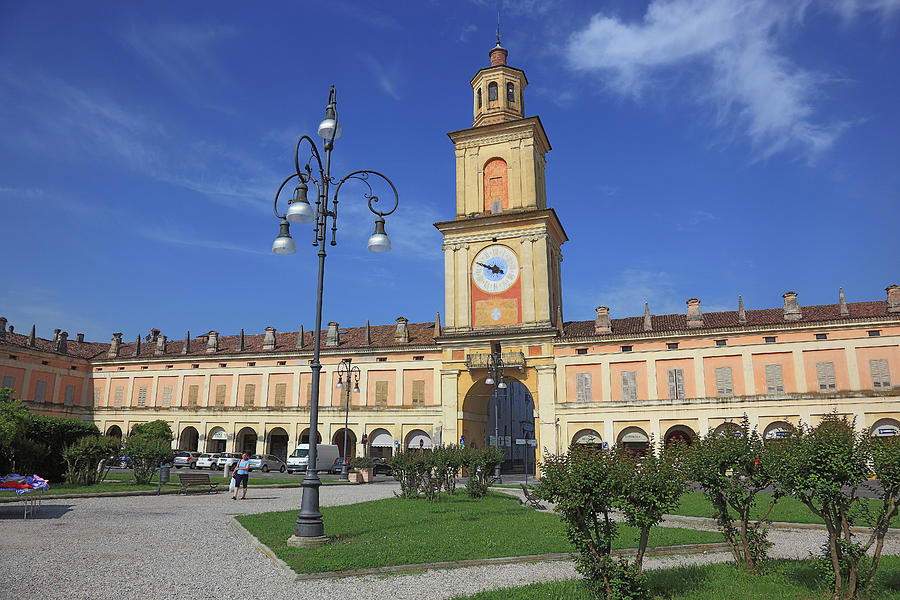 |
| Bentivoglio Palace in Gualtieri |
7. Vigoleno
A hamlet of the municipality of Vernasca, it is a perfectly preserved medieval fortified village (it is first mentioned in documents in 1132) and is located on the top of a hill overlooking the Ongina and Stirone valleys. Among the ancient testimonies worth visiting are the 10th-century Vigoleno Castle, imposing and recognizable even from afar, the Romanesque church of San Giorgio, and the 18th-century oratory of Santa Maria. In the center of the main square of the small village is the small 16th-century fountain, around which the quiet life of Vigoleno has been taking place for centuries. Also worth seeing in the village is the Museo degli Orsanti: it is entirely dedicated to the phenomenon of the “orsanti,” or acrobats who, starting in the 18th century (but the practice is attested in certain areas even well into the 20th century), traveled around the villages of Europe performing with trained animals (especially bears, from which the name is derived).
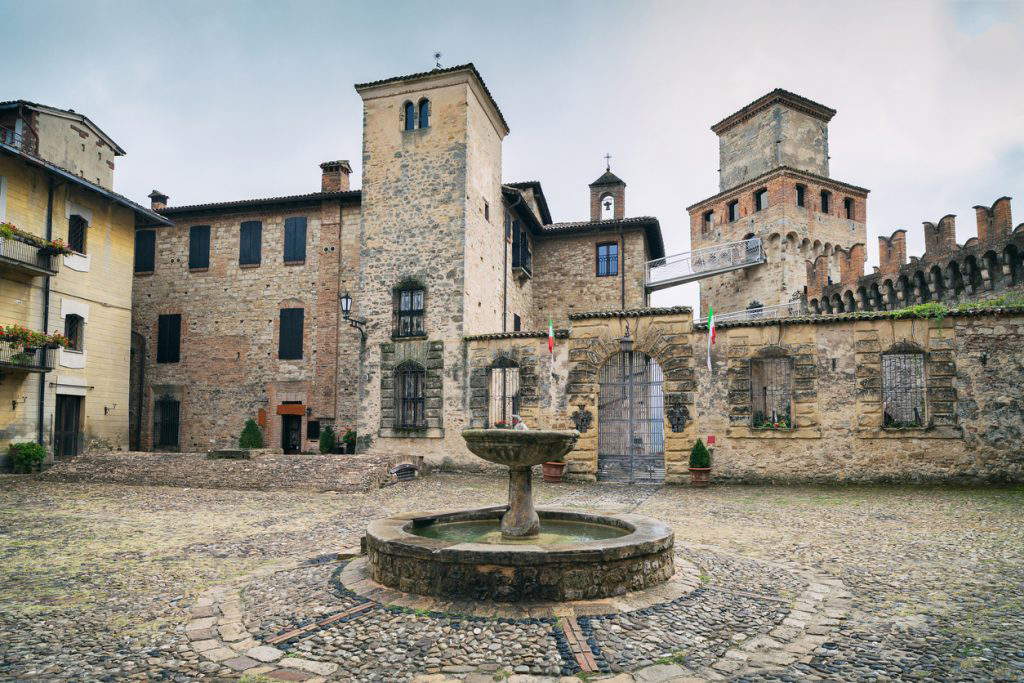 |
| The square and fountain of Vigoleno |
8. Colorno
Colorno’s history is linked to that of the dukes of Parma. In fact, the lowland village, not far from the city, was long administered by the Duchy, and is known today for its sumptuous Reggia, which was built by the Farnese family in the 17th century on the remains of the ancient Rocca (in the past, Colorno was a possession of the Milanese, and on their behalf was ruled by the Terzi and Sanseverino families). The Reggia, which was first the residence of the Farnese and then of the Bourbons, presents itself today in its eighteenth-century appearance: it was the designs of Ferdinando Galli da Bibbiena (from the beginning of the century) and Ennemond Alexandre Petitot (from the 1850s) that gave the Reggia its present appearance. After the Unification of Italy, the Reggia came into the possession of the Savoy family, which immediately turned it over to the state (not, however, before having most of the precious furnishings transferred to other palaces, such as the Royal Palace in Turin or the Quirinale). The Reggia is also adorned with fabulous gardens. Also worth visiting in Colorno is the 16th-century cathedral.
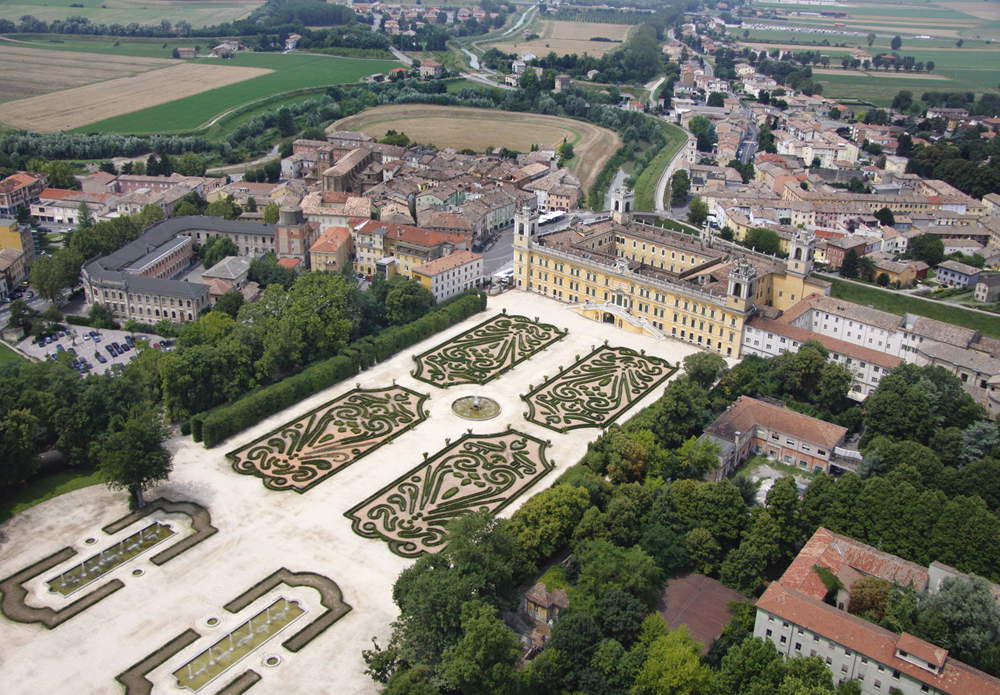 |
| View of Colorno |
9. Brescello
Brescello is world famous for being the setting of the adventures of don Camillo and Peppone, the two characters created from the pen of Giovannino Guareschi, the protagonists of books and films set in postwar and 1950s Brescello. The village, which is located in the province of Reggio Emilia along the banks of the Po River, is home to a museum dedicated precisely to the films starring the belligerent priest and the communist activist who later became, in fiction, mayor of the Reggio Emilia town. The museum is housed in the ancient monastery of San Benedetto, which also hosts a Cultural Center, an Archaeological Museum (one of the main ones in the area: it spreads over two floors and houses mainly important finds from the Roman period, since ancient Brixellum was a fundamental trading place especially in the imperial period), the Museum dedicated to Giovannino Guareschi, and the town Library. The very famous “Talking Crucifix” from the Don Camillo films is preserved in the 18th-century parish church dedicated to the Nativity of Mary.
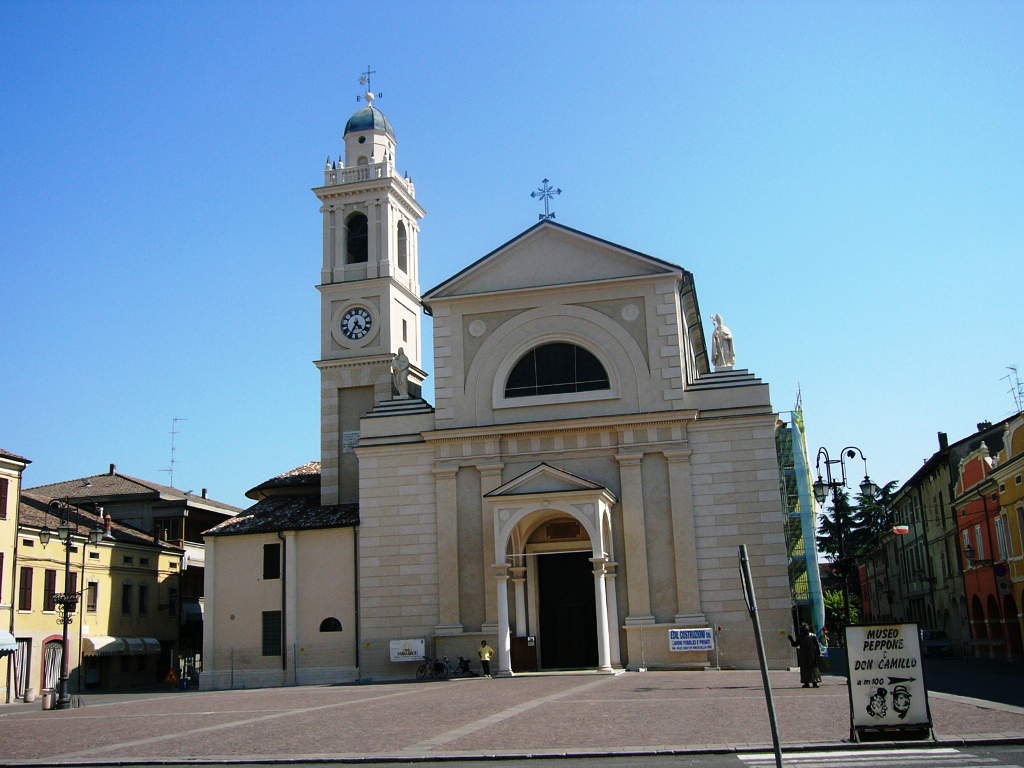 |
| Brescello, Piazza Matteotti |
10. Comacchio
Comacchio, in the province of Ferrara, is located near the Po delta, a region of which it is one of the most important centers. The historical importance of the town is due both to its location and to the many activities (from salt to fishing to agriculture) that have sustained it over the centuries. The picturesque historic town stands on a network of canals: symbol i Comacchio is the “Trepponti” complex, a large bridge that in ancient times formed the access to the fortified town. Several ancient relics are preserved in the town: the 18th-century Duomo, the medieval sanctuary of Santa Maria in Aula Regia, and the neoclassical Ospedale degli Infermi, which now houses the Museo Delta Antico. From the town you can also go on an excursion to the Comacchio Valleys, one of the most interesting natural areas in the country.
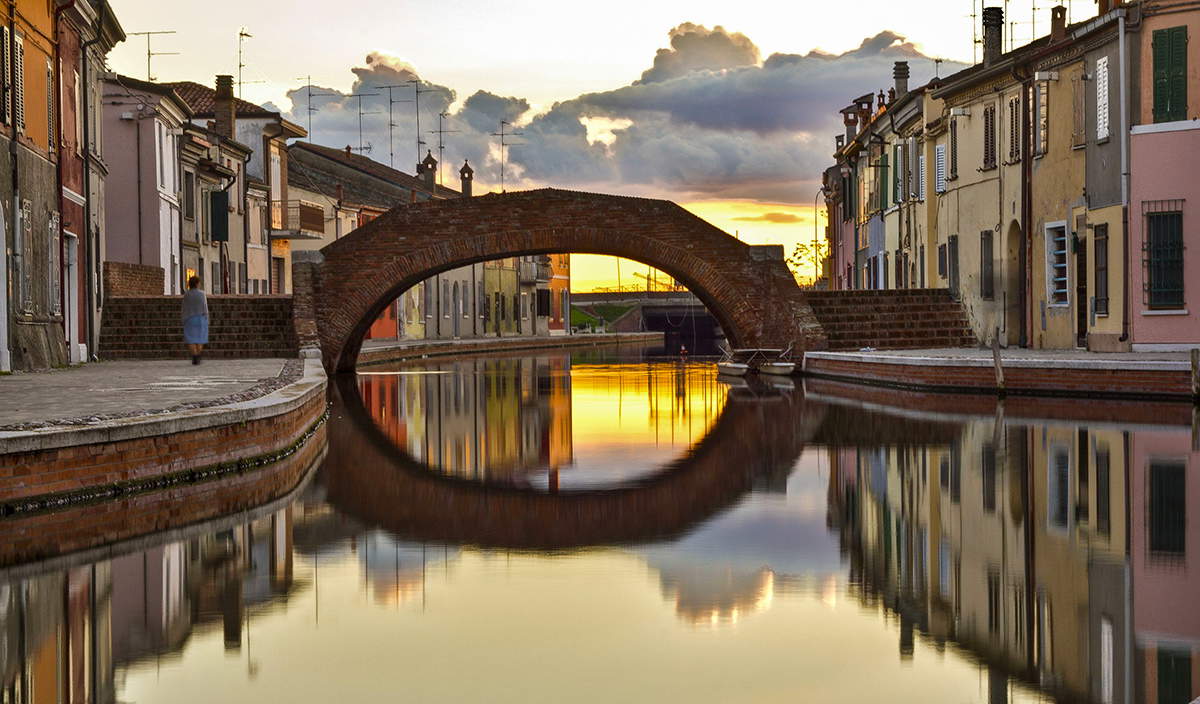 |
| The village of Comacchio |
 |
| Ten villages to visit in Emilia Romagna |
Warning: the translation into English of the original Italian article was created using automatic tools. We undertake to review all articles, but we do not guarantee the total absence of inaccuracies in the translation due to the program. You can find the original by clicking on the ITA button. If you find any mistake,please contact us.



























